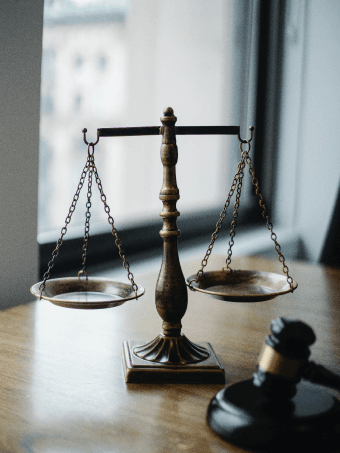Many people know trademark bullies as massive corporations with seemingly endless legal budgets that use their trademark rights to harass and intimidate another business beyond what the law might be reasonably interpreted to allow. They send cease-and-desist letters to amateur fan art artists or oppose a tiny Etsy shop selling three t-shirts a month, just to “protect” their unrelated mark.
In reality, though, Fortune 500 companies might not be the only ones responsible for this situation. Unfortunately, sometimes, it’s the limitations within the USPTO system that make it harder to maintain a fair process for everyone.
The U.S. Patent and Trademark Office (USPTO) was designed to provide a level playing field for all applicants. In theory, anyone, from a solo founder to a multinational company, should be able to protect their brand. But in practice, this is harder to achieve. Rising filing fees, lengthy waiting times, and costly opposition proceedings all play a major role in the way the scales have tilted away from small business owners.
Why is this happening?
Let's start at the foundation. While filing a trademark application was never overly straightforward, at least the fee structure used to be relatively accessible. However, as of 2024, application fees have increased by nearly 40%. So, startups wanting to protect their brand name in multiple classes (for example, supplements and cosmetics) now face significantly higher costs before they even get to market.
Then, after a year of waiting, your application finally gets examined and published for opposition, during which previous trademark owners have the right to object to it. If a larger company starts one of these proceedings, it'll pay a $600 filing fee (per class) and legal fees. If you don't respond, your mark will be refused by default. If you do choose to respond, you're looking at costs that can easily skyrocket into the tens of thousands with attorney fees, discovery motions, and depositions.
For a bootstrapped brand, that makes defending their trademark practically impossible. And the worst part is, larger companies know this far too well.
When costs become a weapon
A well-funded corporation uses the entire system as leverage. They file an opposition, whether their claim has merit or not, simply to drain time and money from smaller competitors. When faced with this prospect, small brands are usually forced into settlement or abandonment, regardless of who's right. The TTAB case directory is a graveyard for oppositions that have been concluded with no answer from the defendant.
This is what happens when fairness collides with financial reality and systematic loopholes. Every filing fee, motion, and delay adds up both in time and resources. Over time, it not only discourages trademark filings but reshapes who gets to own their brand in the first place. And so, the system designed to protect innovation often punishes it.
Why an early trademark strategy is more important than you think
Truthfully, most of these conflicts can be avoided with a stronger, more transparent trademark strategy in the early stages. Businesses should start with a comprehensive clearance search, performed properly by a licensed trademark attorney. These checks are not just about finding identical names in the register. They also include analyzing confusingly similar marks, problematic goods and services overlaps, and prior claims that could derail your entire application.
Without that kind of due diligence, a layman's search or even just a simple filing accident can trigger an opposition later, costing you far more than the trademark itself. Unfortunately, many founders disregard and skip this step, assuming that if the USPTO accepts their application for examination, there aren't any inherent problems with it. But in reality, the USPTO's initial review only checks for direct conflicts and descriptiveness, while the real danger often comes later.
By the time it does come, it’s too late to “fix” it cheaply.
Leveling the playing field and increasing your odds
At Trama, we've seen firsthand how these issues play out. After realizing their "approved" application is now facing an opposition that would be near impossible to overcome without a large sum to back up their claims, many founders come to us to start things over and get it right the second time around.
That’s why we’ve made lawyer-led clearance checks free of charge before filing. It helps small brands navigate a system that too often favors those with deeper pockets. We uncover all of the potential threats and complications that might lie ahead and let you make an educated choice.
Because when entrepreneurs can protect what they've built, the playing field becomes a lot fairer, and the marketplace becomes a lot more creative.
FAQs - How the USPTO worsens trademark bullying
1. Is the USPTO biased against small businesses?
Not by design, but in practice, yes. High fees, long timelines, and complex procedures give larger companies a clear advantage, even when the rules are technically the same for everyone.
2. Can a small business win against a big brand in an opposition?
Yes, but it’s tough without preparation. The key is filing early, doing a proper clearance search, and keeping strong evidence of use. That groundwork can make or break your defense later.
3. How can small brands avoid becoming victims of trademark bullying?
This is difficult to achieve because, as we mentioned, trademark bullies may file oppositions even if their claims are weak. The best course of action would be to choose a trademark strategy before your application is filed in the first place. Choose distinctive names, run a legal search before filing, and make sure you're registering in the right classes. Most disputes happen because founders skip these steps.


